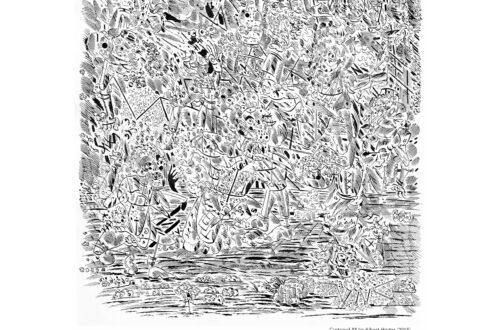
Love and Jouissance: Conversation with Lacan on Feminine Sexuality
Psychoanalysis reveals the unconscious sexuated in nature. Tied to the ontological question of how to be a woman or a man, the unconscious fails to fully represent an answer to such question. Comparing feminine to masculine sexuality, Freud asserted that “the sexual life of adult women is a ‘dark continent”[1] and he confessed that the question “that I have not yet been able to answer, despite my thirty years of research into the feminine soul, is ‘What does a woman wants?’”
Freud viewed the Oedipus drama as the moment which women and men assume their respective sexual positions through the mediation of the phallus, which Freud identified with the penis. Woman’s sexuality then is infused with penis envy resulting in a need to demonstrate that she is the phallus (as desired object to men, through engendering a child, etc) while man within his fear of castration constantly demonstrate that he has the phallus.
Thirty years later, Lacan would complicate Freud’s formulation by stating that the phallus is not the penis but rather a signifier of lack (introduced by the father function) that allows the entrance of both men and women into language. Consequently, for Lacan, “feminine” and “masculine” will be defined according to the position one takes regarding such structuring signifier. Women and men are then linguistic categories that dispense the need to recourse to anatomic-physiologic qualities to define these positions that relate to two different modes of loving, desiring, and enjoying.
Following the logic of sets he places men on the side of a phallic jouissance (that is, part of a whole set in which every man is castrated) and women on the side of a supplementary, Other jouissance (that is, part of a set that is not whole because “Not all women are castrated”). These theoretical articulations will lead Lacan to present some of his famous aphorisms “The Woman does not exist” and “There is no sexual relationship.”
The question is then why, if for Lacan anatomy is not destiny as Freud believed, he still invites women analysts to talk: “If there is some angle from which the business of the sexual relationship could be clarified, it is precisely from the ladies’ side…Regarding feminine sexuality, our colleagues, the lady analysits, do not tell us…the whole story” (Encore 57)
Feminine sexuality remains veiled to both women and men and yet there is an attempt to say something of that: “There is a jouissance that is hers about which she herself perhaps knows nothing if not that she experiences it – that much she knows (Encore 74)
Is the experience of women’s sexuality communicable? Is feminine sexuality that ‘dark continent,’ something we can theorize or know? This panel questions some of these psychoanalytic concepts and reflects on them through clinical practice, literary interpretations, and philosophy. We will introduce the panel with a quick survey of the main theoretical aspects to foster the dialogue among the panelists and the audience.
Works Cited:
Lacan, Jacques. Encore: On Feminine Sexuality, the Limits of Love and Knowledge (Book XX). Ed. Jacques-Allain Miller. Trans. Bruce Fink. New York: Norton, 1999.
[1] Freud, S. The Question of Lay Analysis (1926), P22. SE, 20: 183-250.





